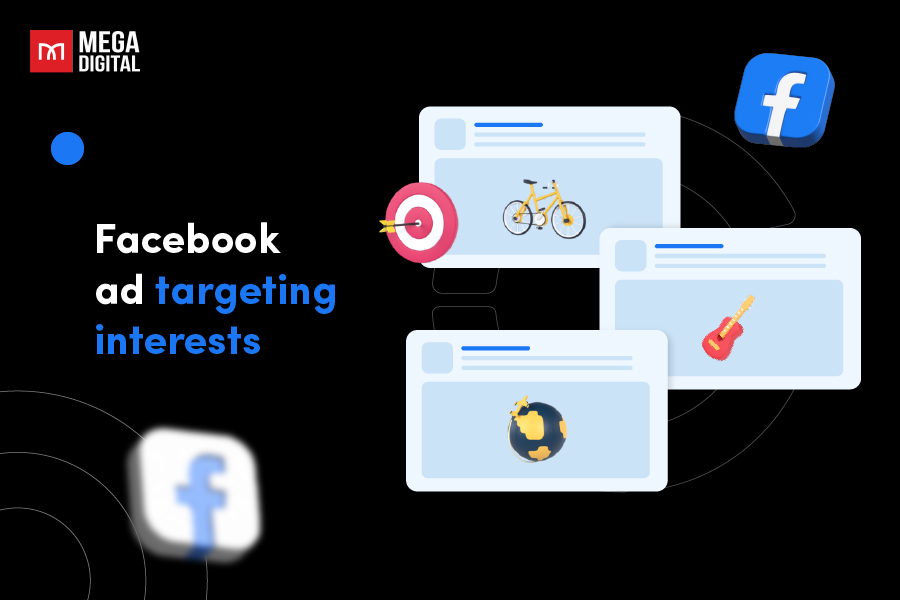Audience signals in Performance Max campaigns provide valuable insights to Google about the desired target audience. These signals, such as demographics, interests, and detailed targeting, help optimize campaign performance and reach the right customers. Structuring audience signals effectively to refine your targeting strategies.
What are audience signals in Performance Max?
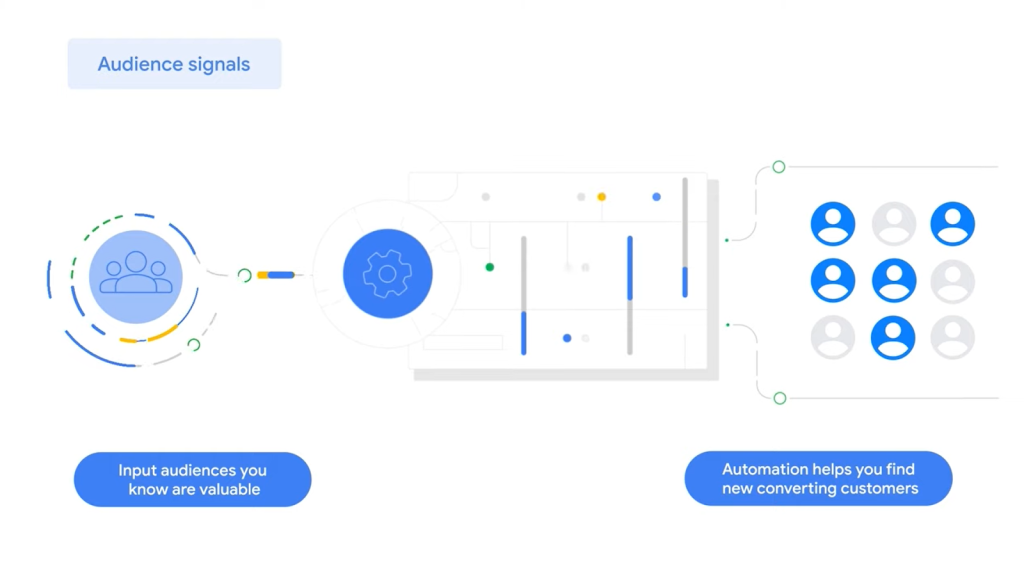
Audience signals are instructions advertisers give to Google about who they want their ads to reach. They are not exact targets but more like suggestions that help guide the algorithm in the right direction.
Google uses these signals to make your Performance Max campaigns better based on what you want to achieve. It’s important to know that audience signals are connected to a group of ads. So, whenever you create a new ad group, you also need to provide audience signals.
This makes sense, doesn’t it? You’re creating a group of ads meant for a specific audience, and together they help Google find the right people to show your ads to.
Performance Max audience segments types
Here are the different audience signals available in Performance Max:
- Demographics: Targeting based on factors such as age, gender, education, or marital status.
- Affinity Signals: Segmenting the audience into groups with a strong interest in specific topics, allowing you to raise awareness within your target market’s community.
- In-market Audience Signals: Identified by Google as individuals actively searching for products or services to purchase, based on various sources like competitor research.
Advantages of using audience signal in Performance Max

Online advertisers often face challenges when it comes to reaching the right people at the right time for making purchases. However, Performance Max (PMax) campaigns help address and resolve some of these challenges through the use of audiences.
- Enhanced targeting: With PMax, you can create asset groups linked to specific signals. This allows for tailored advertisements that resonate with your audience.
- Improved customer identification: Google uses the information from your PMax campaigns to identify your most valuable customers.
- Audience suggestions: The audience signals you set in PMax serve as suggestions to Google, guiding them toward the most suitable audience for your products.
- Automation and optimization: PMax campaigns use machine learning to automatically optimize towards top-performing audience segments.
How do audience signals work?
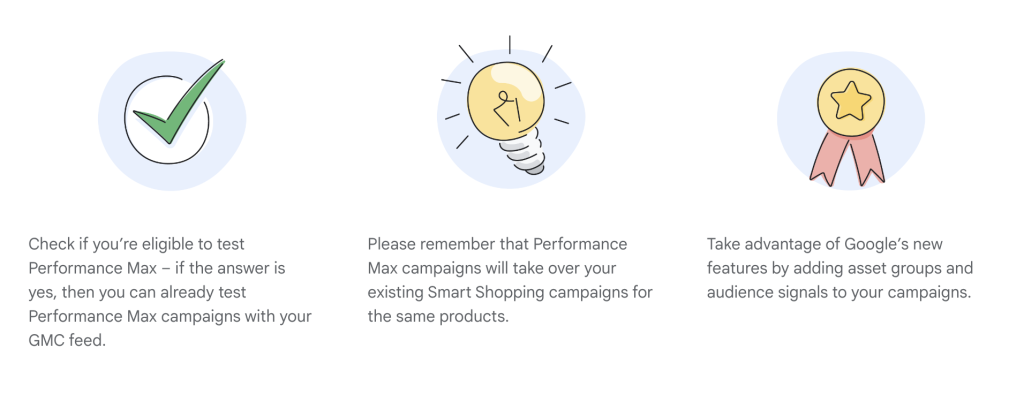
While you have the choice to use audience signals or not, the important question to consider is: If you have information, which audiences are more likely to make purchases for a specific group of ads?
For example, let’s look at this case study: One of Mega Digital’s customers has a sports equipment store, and we’ve gathered data showing that the 18-25 age group is more likely to buy their products this quarter. In that case, we can include the 18-25-year-old audience in your ad group.
If you don’t have any insights or data, don’t worry. Performance Max campaigns use machine learning to automatically optimize towards the most successful audience segments for you.
Read more: How to Optimize Performance Max Campaign
How to add audience signals to Performance Max
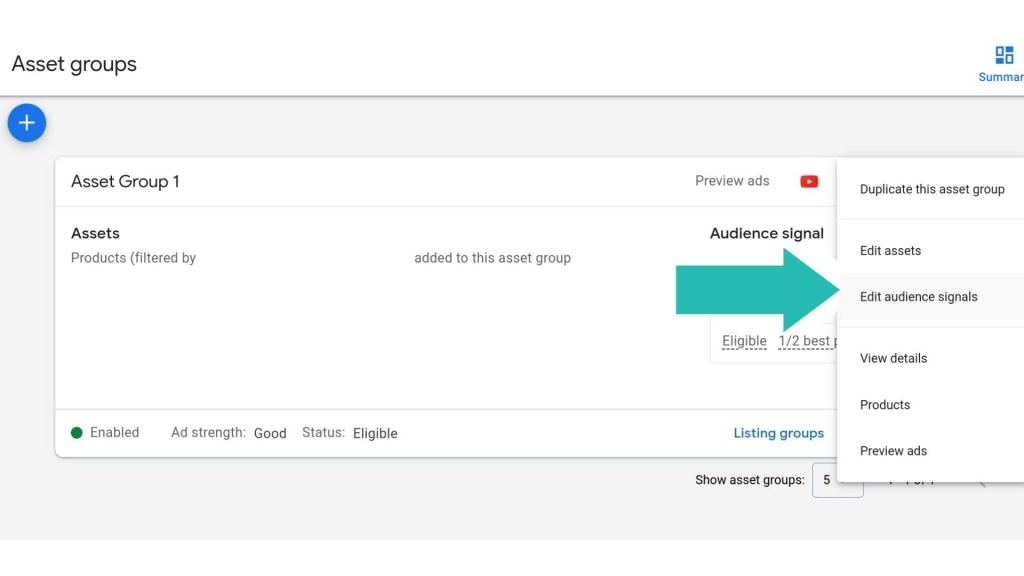
Here are the options to choose from when setting up audience signal Performance Max:
- Your data (remarketing lists, customer lists, etc.)
- Custom segments (based on activity on Google property)
- Interests & detailed demographics (in-markets, affinities, life events, etc.)
- Demographics (age, gender, parental status, household income)
Using more signals widens your initial audience targeting. Starting with specific signals, like first-party data (your own data), is recommended for better results.
1. Create separate asset group for each audience
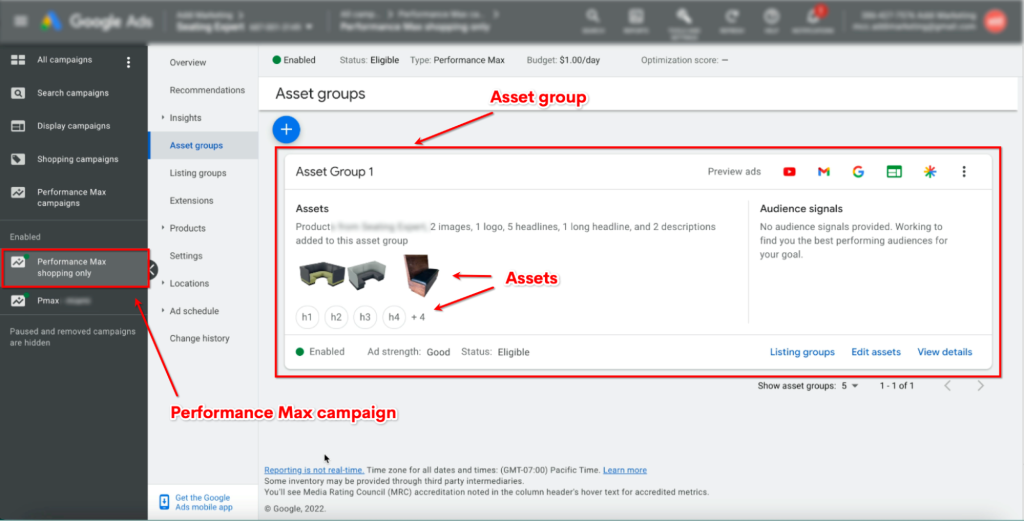
According to Mega Digital’s experience when we run ads for thousands of customers, never add all of your audience signals in a single asset group. For each audience signal, create a separate asset group to better organize your campaigns.
To enhance campaign organization, we categorize audience signals into four distinct categories:
- Non-converters: Includes website visitors, add-to-carts, and initiated checkouts.
- Converters: Comprises individuals who have already made a purchase from you.
- Demographic and interest-based targeting: Focuses on specific demographics and interests.
- Custom segments and keywords: Involves creating segments based on custom criteria and relevant keywords.
Each of these categories can be further divided into subcategories for more detailed targeting.
We employ this approach because Google does not directly reveal which audiences are converting. Instead, it indicates the performance of asset groups through asset group details and listing group metrics.

By associating audience signals with specific asset groups, you can determine which audiences are converting and continue targeting them. In essence, this provides you with greater control over your campaigns.
>>> Read more: Complete Guide to Performance Max Assets: Specs & Best Practices
2. Build custom segments & keywords lists
Custom segments allow advertisers to focus on specific groups of users based on their recent online activities, such as the searches they made and the websites they visited.
When creating a custom segment, advertisers can enter keywords that are related to the interests of their ideal customers or keywords that users might be searching for when looking for products similar to theirs.
In some cases, targeting keywords that relate to interests can be more effective. For instance, a furniture company can target homeowners by selecting keywords and websites associated with research or interior design services, as this indicates a potential need for new furniture.
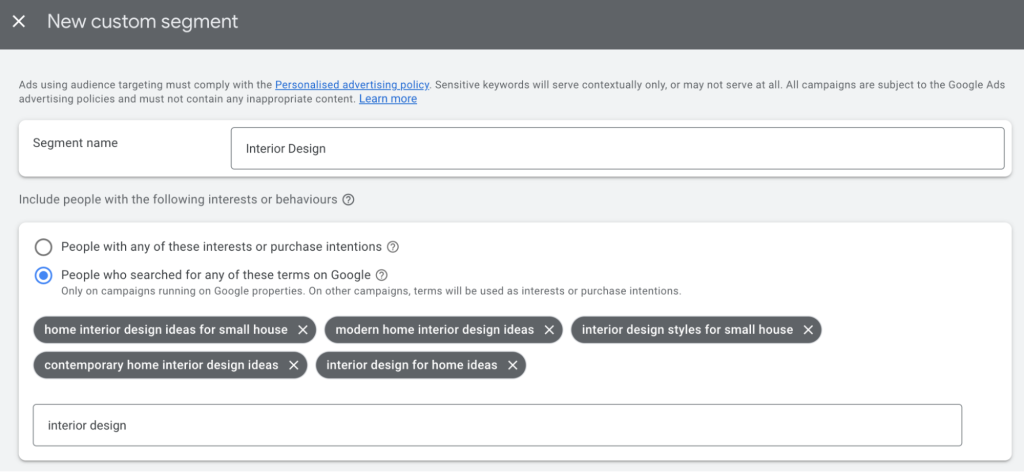
Here’s another helpful tip: Inform Google about your direct competitors. Ensure that these competitors have similar product offerings, as Google will analyze their entire website, rather than just a specific section.
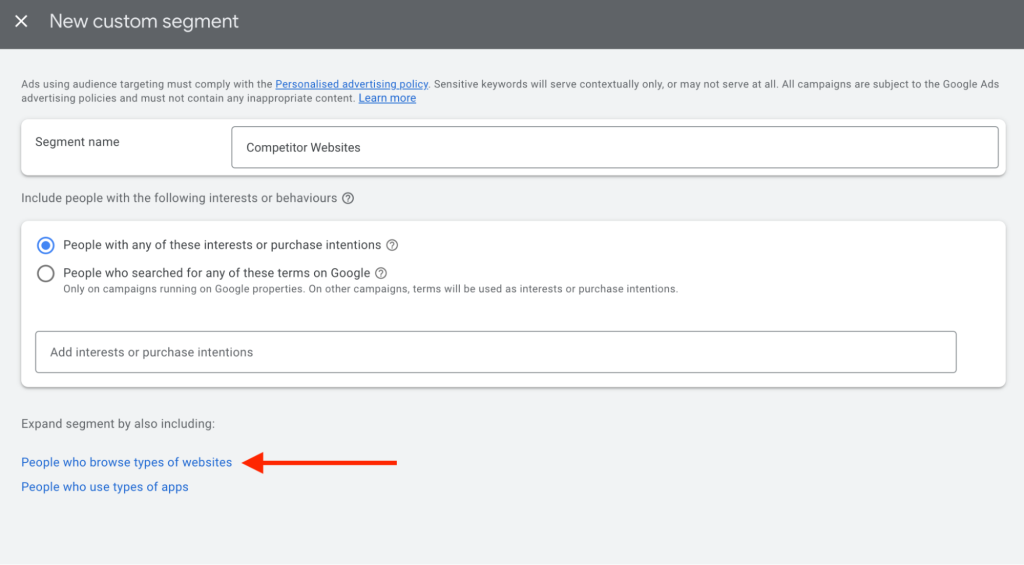
3. Add Non-converters to Audience Signals (Your Data)
The initial step is to include individuals who have not made a purchase yet. This group of potential customers holds value, and where you acquire these website visitors will impact their characteristics and potential for conversion.
By targeting this audience segment, you can tailor your marketing efforts to attract and convert these potential customers, expanding your customer base and driving sales.
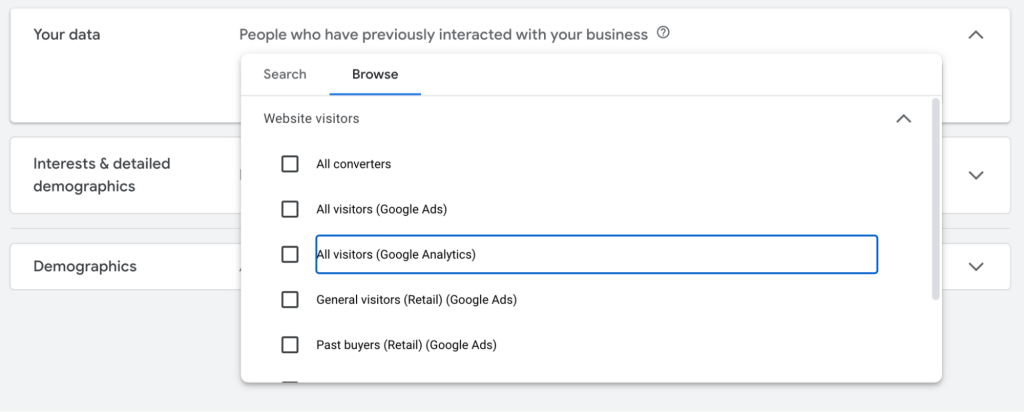
Let’s say it simpler:
To target the right audience effectively in Google Ads, include visitors who show interest in making a purchase and exclude those with low conversion rates. Add audience signals to asset groups or create custom audiences in the Audience Manager to optimize your campaigns.
4. Add Converters to Audience Signals (Your Data)
This audience consists of customers who have already made a purchase from you. The goal is to provide Google with information about your existing customers. Google’s machine learning algorithm will analyze this data and identify new audiences that share similar characteristics. Similar to the visitor audience mentioned earlier, this group will also be of high quality since they have already shown their willingness to make a purchase.
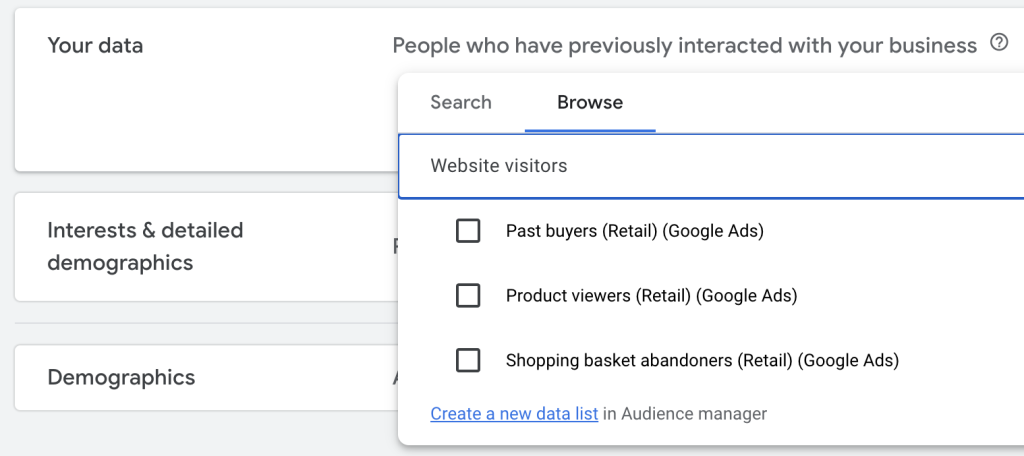
It all depends on your current stage of online sales. If you’re running a brand-new e-commerce marketing campaign for a newly launched website, you might not have an audience to include in this category yet. However, if you have a list of past buyers from a previous Google Ads campaign or other traffic sources, you can assess if these converting users are relevant to the product you’re promoting in your PMax campaign.
Taking it a step further, you can upload your customer match list to the Audience Manager in Google Ads and use it as part of your audience signals in Performance Max. Google will then leverage this customer list to discover more people who are interested in what you have to offer.
5. Add Demographics & Interest-based Targeting
These segments represent characteristics that you believe are relevant to your target customers, such as their age, gender, marital status, household income, or specific industries they might be interested in. The more precise and accurate you can be when defining these segments, the more effective your targeting will be.
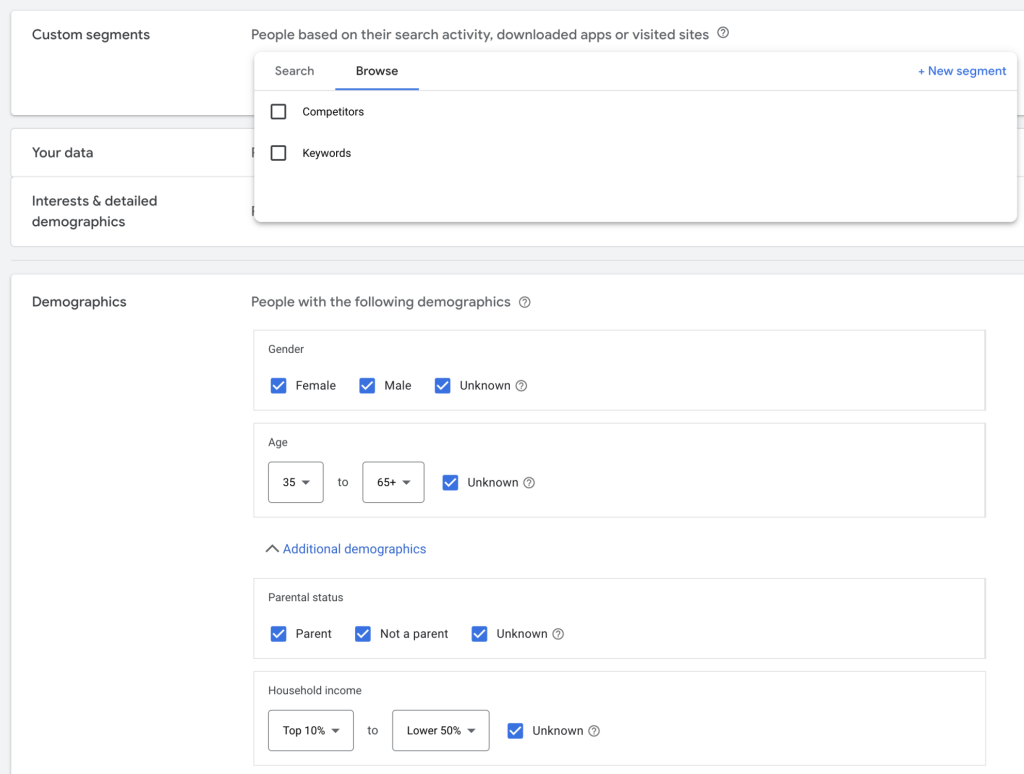
Using Pmax audience signals depends on your product type and understanding of the target audience. For instance, specifying household income can identify potential customers for luxury goods, while targeting parental statuses can be effective for baby clothes and toy marketing.
Google organizes audience signals into different categories:
- In-market: These are internet users that Google identifies as more likely to make a purchase based on their online activities and search history.
- Life events: Targeting people based on significant life events allows you to reach them at times when they are more likely to make important buying decisions, such as buying a house or starting a new job.
- Detailed demographics: This includes characteristics like marital status, parental status, and education level.
- Affinity: Affinity audiences allow advertisers to reach users based on their interests and lifestyles, using data from their browsing history, search queries, and other web interactions. These audiences can include categories like car enthusiasts or fashion enthusiasts.
Mega Digital has shown you everything about Pmax audience signals, hope the article will help you fully understand this interesting feature of Performance Max Campaigns.
Final words
Audience signals within Performance Max function as invaluable cues directing the course of your campaign. These signals, derived from user behaviors and preferences, act as beacons illuminating the path to higher engagement and conversion rates. Leveraging these signals optimizes ad placements and content, ensuring campaigns align seamlessly with the audience’s interests, ultimately driving better performance and results.









